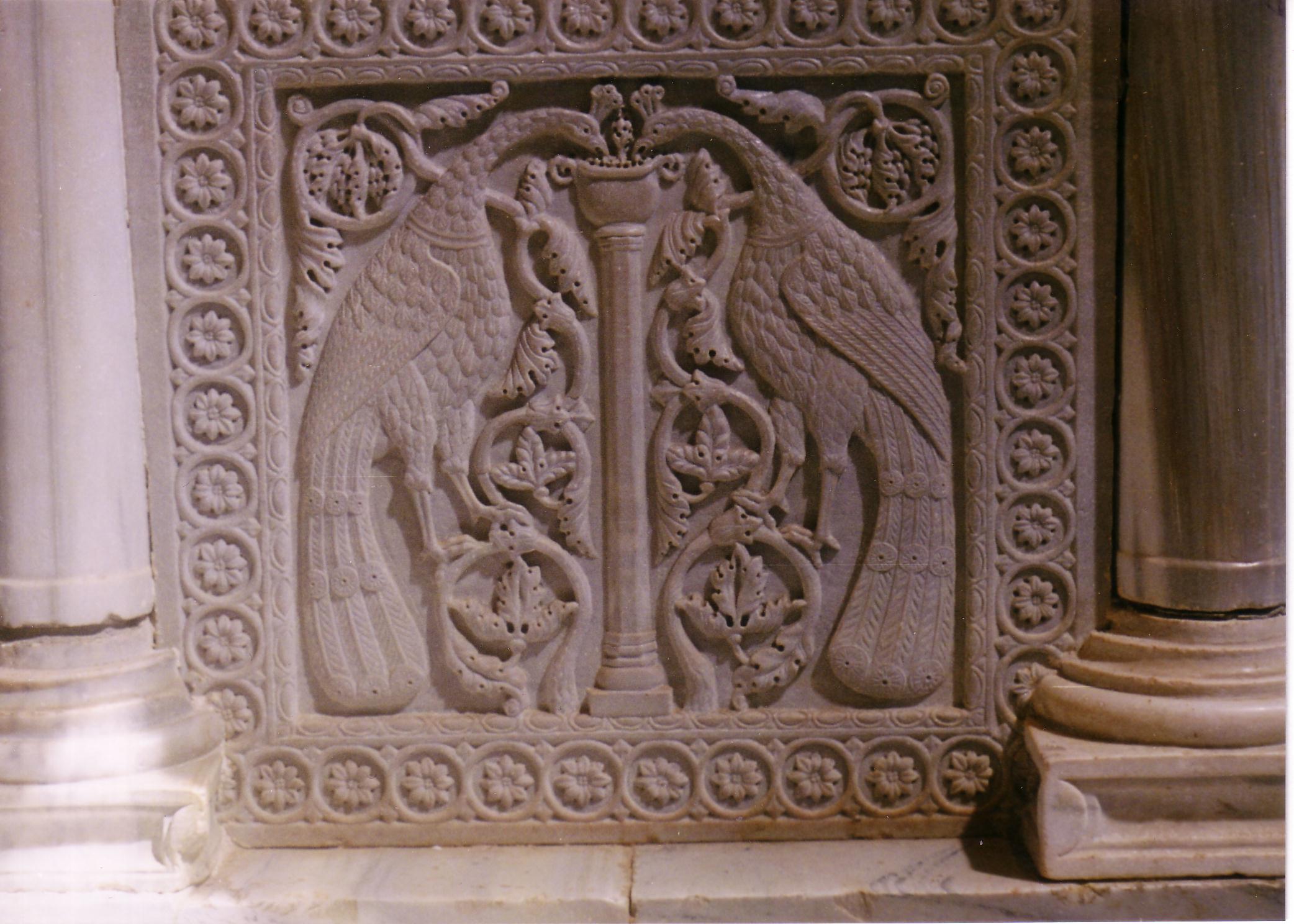 |
The Byzantine marble panels (11th century) on the iconostasis in the Cathedral at Torcello are carved with peacocks drinking from the fountain of life. The peacock was a symbol of Christian immortality. At Works, 9.429 Ruskin writes: ‘I believe peacocks to be purely Byzantine’. Also, Works, 9.288 ‘the whole spirit and power of [the] peacock is in those eyes of the tail’. And see Notebook M2 p.129, where Ruskin inserted the same form of words, Notebook M2 p.133 where he cites Lindsay:
Lindsay (1847) I. xxiii in the table of symbols includes:
The Resurrection - by the phoenix, and the peacock, which loses its rich plumage in winter and recovers it is spring.
In his discussion of Byzantine symbolism at Ravenna at I.103 Lindsay writes:
The bas-reliefs of the ancient ambones of the cathedral, now incrusted into the wall behind the choir, hardly deserve mention as works of art, but are curious as exhibiting, in distinct rows, the fish, the dove, the lamb, the stag, the peacock, &c - “the whole sacred menagerie,” as Mr. Hope calls it, of Symbolism (Lindsay (1847))
 |
 |
 |
 |
[Version 0.05: May 2008]